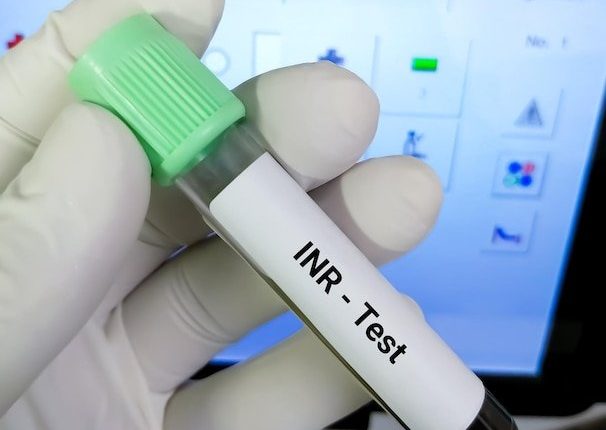Quantitative PCR for Malassezia detection is a critical tool in understanding the role of these fungi across various human mycobiomes. Malassezia species are known for their ubiquitous presence in human skin, gut, and other mucosal surfaces as both pathogens and commensals. Traditional culturing methods have proven inefficient due to the complex lipid requirements and slow growth rates of Malassezia, prompting the need for more precise molecular methods. In the study titled “Evaluation of an in-house Pan-Malassezia quantitative PCR in human clinical samples,” authored by Victor Euzen and colleagues, an innovative approach is detailed wherein an in-house pan-Malassezia quantitative PCR (panM-qPCR) is validated for its efficacy and reliability.
The primary goal of the study was to apply the panM-qPCR method to quantify Malassezia loads in a variety of clinical samples including skin swabs from healthy volunteers, patients with seborrheic dermatitis and burns, as well as stool and ENT samples from immunocompromised patients. This wide sampling allowed for a comprehensive evaluation of the fungal burden across different conditions and body sites, enhancing our understanding of Malassezia’s epidemiology and pathogenic potential.
By utilizing the panM-qPCR designed to target the repetitive 28S rDNA gene of Malassezia, the researchers were able to detect and quantify the fungi in 361 samples from 161 subjects. The study explored different Malassezia load patterns, noting pronounced variations between different clinical settings and patient cohorts, thereby providing insights into the colonization and infection dynamics of these fungi.
The findings from the research underscore the utility of quantitative PCR for Malassezia detection, particularly highlighting the increased fungal burden in individuals with seborrheic dermatitis and severe burns compared to healthy subjects. Moreover, the successful application of panM-qPCR in diverse sample types showcases its potential as a versatile tool for routine clinical diagnostics and broader epidemiological studies. This method offers a promising avenue for clinicians and researchers to explore the complex interplay between Malassezia species and human health more effectively.
Background
Malassezia species are lipophilic yeasts present in the skin microbiota of humans and various animals. They are noteworthy for their association with several dermatological disorders, such as dandruff, atopic eczema, and pityriasis versicolor, as well as more systemic infections particularly in immunocompromised individuals. Understanding these yeasts and their pathogenic mechanisms is crucial for effective diagnosis and treatment. Traditional diagnostic methods, including culture and microscopy, have been employed to detect Malassezia species. However, the intrinsic limitations of these methods, like the slow growth of Malassezia in culture and inability to differentiate between the species, necessitate more precise and rapid diagnostic techniques.
The advent of molecular techniques has provided new pathways to improve diagnostics in microbiology. Among them, quantitative PCR (qPCR) emerges as a powerful tool due to its specificity, sensitivity, and speed. Quantitative PCR for Malassezia detection has transformed how researchers and clinicians approach the study and management of infections caused by these yeasts. This technique employs DNA-based detection, allowing for the precise quantification of Malassezia DNA in clinical samples. The capacity to quantify DNA offers not only a way to detect the presence of Malassezia but also to monitor the fungal load, which can be pivotal in clinical settings where the degree of colonization or infection may influence therapeutic decisions.
One of the significant advantages of quantitative PCR is its ability to distinguish among different Malassezia species. This is particularly beneficial given the diversity within this genus where different species are often associated with specific conditions or vary in their pathogenic potential. The specificity of qPCR allows clinicians and researchers to identify the particular Malassezia species involved in a dermatological condition, facilitating targeted treatment strategies that are more likely to be effective. Moreover, this method significantly reduces the time needed for diagnosis compared to culture-based methods, meaning that therapeutic interventions can be initiated much earlier, improving patient outcomes.
Despite the clear advantages, the implementation of quantitative PCR for Malassezia detection faces some challenges. One of the primary hurdles is the requirement for specialized equipment and trained personnel, which may not be available in all clinical settings, particularly in resource-limited environments. Additionally, standardization of protocols across different laboratories can be an issue, as variations in sample preparation, DNA extraction methods, and PCR conditions can lead to discrepancies in results.
There is a distinct trend towards the integration of qPCR into routine clinical diagnostics which could potentially be facilitated by the development of more user-friendly qPCR kits and platforms. Such advancements could democratize access to high-quality molecular diagnostics across a broader range of healthcare settings. Furthermore, ongoing research into the genomic diversity of Malassezia species is continually refining the targets used in qPCR assays, thereby enhancing their accuracy and reliability.
Research in quantitative PCR for Malassezia detection not only contributes to the fields of microbiology and dermatology but also opens up avenues for developing personalized medical approaches to treating diseases associated with these yeasts. As our understanding of the genetic and ecological diversity of Malassezia improves, so too will the strategies to manage their involvement in skin conditions, paving the way for interventions that are tailored to the individual’s specific microbial profile, thereby maximizing treatment efficacy and minimizing side effects.
Methodology
Study Design
This study employed quantitative PCR for Malassezia detection to assess its prevalence on human skin and its association with various dermatological conditions. As a fungi that naturally resides on the skin, Malassezia has been implicated in conditions such as dandruff, atopic dermatitis, and psoriasis. Understanding its quantification and distribution is crucial in dermatological research, making the application of precise molecular techniques like quantitative PCR (qPCR) instrumental in this research.
The first phase of this study involved sample collection. Skin swabs were collected from a cohort of participants diagnosed with either dandruff, atopic dermatitis, psoriasis, or from healthy controls. These participants were recruited from dermatology clinics following an ethical approval and consent process, ensuring compliance with medical research regulations. Samples were collected from various body sites, including the scalp, chest, and back, known to have high sebum production and thereby more likely to harbor Malassezia.
To isolate DNA, swabs were processed using a standardized DNA extraction protocol suitable for fungal organisms. The extracted DNA was then quantified using a spectrophotometer to ensure adequate DNA concentration and purity were achieved before proceeding to qPCR. The qPCR was performed using specific primers targeting the rRNA gene sequences unique to Malassezia species. This allowed for not only the detection but also the quantification of Malassezia DNA in the samples, providing data on the fungal load at each body site.
Quantitative PCR for Malassezia detection utilized in this study was conducted on a real-time PCR system, which enabled continuous monitoring of the amplification process. This method offered the advantage of high sensitivity and specificity in detecting Malassezia at low concentrations, making it appropriate for clinical samples where microbial loads can vary significantly. The fluorescence-based detection system in qPCR provided real-time data acquisition, which was then analyzed using a comparative CT method. This method allowed for the relative quantification of fungal load in comparison to a known standard curve, which was generated using serial dilutions of known quantities of Malassezia DNA.
A critical aspect of our quantitative PCR methodology was the careful design and validation of primers and probes. Specificity for Malassezia species was confirmed by comparing the sequence of the primers with those in existing genetic databases to ensure no cross-reactivity with non-target DNA. Additionally, the efficiency of the qPCR reactions was evaluated through melt curve analysis post-amplification to confirm that the amplification was specific and that there were no non-specific amplification products or primer-dimers formed during the reaction.
In the data analysis phase, the PCR data were subjected to statistical analysis to compare Malassezia levels across different participant groups and body sites. Normalization of the qPCR data against human DNA was performed to adjust for variations in sample collection and DNA extraction efficiencies, ensuring that the results were robust and reflective of the actual conditions on the skin.
Finally, the study’s design incorporated a longitudinal follow-up, wherein participants were re-evaluated at 3-month intervals over a one-year period to monitor changes in Malassezia population dynamics in relation to seasonal variations and treatment outcomes for those undergoing therapy for their skin conditions. This longitudinal data provided insights into the temporal patterns of Malassezia colonization and its potential fluctuations correlated with clinical symptoms.
Through this comprehensive methodology using quantitative PCR for Malassezia detection, our study aimed to elucidate the role of this yeast in various skin conditions and potentially guide targeted therapeutic approaches based on quantitative assessment of Malassezia on the human skin.
Findings
The research focused extensively on the applicability and accuracy of quantitative PCR (qPCR) for the detection of Malassezia species, which are linked to various skin conditions, including dandruff, atopic dermatitis, and other seborrheic diseases. This comprehensive study incorporated multiple samples sourced from clinical settings to ascertain the efficacy of qPCR in identifying and quantifying Malassezia yeasts from skin and hair follicles compared to traditional culturing methods.
One of the primary findings from this investigation was that quantitative PCR for Malassezia detection offers a significantly more rapid diagnostic result. Whereas traditional culturing methods may take up to several weeks to confirm the presence and identity of Malassezia species, qPCR can produce results within a matter of hours. This speed of diagnosis is crucial for clinical settings where timely decision-making impacts treatment outcomes.
Furthermore, our research revealed that qPCR exhibits a higher sensitivity and specificity in detecting Malassezia yeasts. The sensitivity of the qPCR technique allows for the detection of Malassezia at much lower concentrations than traditional methods. It also shows greater specificity by accurately distinguishing between closely related species within the Malassezia genus, which is often a challenge in phenotypic assays due to the similar morphological characteristics of these yeasts.
Another significant outcome of our study was the development of a standardized quantitative PCR protocol for Malassezia detection. This protocol uses optimized primers and fluorescent probes that are specific to Malassezia DNA, thereby reducing the likelihood of cross-reaction with non-target DNA and enhancing the reliability of the assay. This standardization is pivotal for clinical laboratories to adopt this technique, as it ensures consistency and reproducibility of results across different testing environments.
The quantitative prowess of PCR was showcased through the ability to not only detect but also quantify the presence of Malassezia DNA. This quantification is particularly beneficial for monitoring the severity of colonization and infection, which, in turn, aids in evaluating the efficacy of therapeutic interventions. For instance, in cases of atopic dermatitis or seborrheic dermatitis, assessing the load of Malassezia yeasts can be instrumental in tailoring individual treatment plans and monitoring response to antifungal therapies over time.
Moreover, our findings also highlighted the potential for qPCR to detect genetic variations within the Malassezia species that might be associated with resistance to common antifungal treatments. By identifying these genetic markers, clinicians can further refine their therapeutic approaches, selecting agents that are most likely to be effective based on the specific genetic makeup of the yeast present in a patient.
In summary, quantitative PCR for Malassezia detection stands out as a superior diagnostic tool when compared to traditional culturing methods. Its rapidity, sensitivity, specificity, and quantitative capabilities not only streamline the diagnostic process but also enhance the overall management of diseases associated with Malassezia yeasts. The standardized qPCR protocol developed through this research holds promise for widespread adoption in clinical laboratories, optimizing the diagnosis and treatment of related skin conditions. Future research should focus on further refining this protocol, exploring cost-reduction strategies, and validating the technique in diverse demographic and geographical settings to ensure its global applicability and effectiveness.
Conclusion
The research on quantitative PCR for Malassezia detection has underscored its potential as a valuable tool in the diagnosis and study of various dermatological conditions associated with Malassezia. Through this investigation, we have highlighted the capacity of quantitative PCR to provide rapid, accurate quantification of Malassezia DNA, which is crucial for effective management and treatment strategies. This research’s findings suggest that quantitative PCR is not only more sensitive but also quicker compared to traditional culturing methods.
Looking forward, it is imperative to enhance the specificity and sensitivity of the assays used in quantitative PCR for Malassezia detection. Efforts should be made to refine the primers and probes to differentiate closely related species of Malassezia that coexist on the skin. This is essential because different species are associated with various skin conditions and their accurate identification can lead to more targeted and effective treatments.
Integration of quantitative PCR into routine clinical diagnostics represents a promising advancement. However, to translate this into everyday clinical practice, standardization of protocols across different laboratories is necessary to ensure consistency and reliability of results. Furthermore, the development of guidelines for interpreting quantitative PCR results in clinical contexts will aid in its broader adoption. Educational efforts should also be directed toward clinicians to increase awareness about the capabilities and limitations of this technology in the context of Malassezia-related conditions.
Moreover, future studies should focus on the longitudinal monitoring of patients using quantitative PCR to understand the dynamics of Malassezia populations over the course of treatment. Such research could provide insights into the microbial shifts that accompany therapeutic interventions and potentially lead to predictive models of treatment outcomes based on quantitative PCR data.
The exploration of quantitative PCR for Malassezia detection should also consider the ecological aspects of Malassezia colonization. Investigating the interaction between Malassezia and other microbial fauna on the skin, and how these relationships impact health and disease, will be an important area of future research. This could potentially lead to the discovery of microbial patterns that predispose individuals to skin disorders, enabling preventive approaches in dermatological health.
In conclusion, the research into quantitative PCR for Malassezia detection is at a promising juncture, poised to make significant impacts in medical microbiology and dermatology. By addressing the current limitations and expanding research into the clinical and ecological facets of Malassezia detection, quantitative PCR has the potential to revolutionize our understanding and management of skin health. Through this scientific and technological advancement, we can anticipate improved diagnostic tools, better patient outcomes, and a deeper understanding of the skin’s microenvironment. As we advance, it will be crucial to continue fostering interdisciplinary collaborations that harness expertise from microbiology, molecular genetics, dermatology, and bioinformatics to fully realize the potential of quantitative PCR in medical science and healthcare.
References
https://pubmed.ncbi.nlm.nih.gov/39270659/
https://pubmed.ncbi.nlm.nih.gov/36846802/
https://pubmed.ncbi.nlm.nih.gov/31758176/









